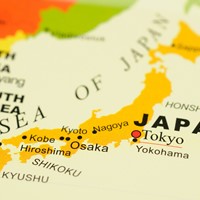Japanese National Holiday Calendar

Japan has many unique national holidays, from historic commemorations to religious festivals. Here’s a concise guide to the major ones, along with traditions and tips for travelers.
Travel Tip: During holidays, accommodations can fill up fast. Use hotel booking websites or English-speaking travel agencies to make your trip easier.
January
1st/ New Year’s Day (Shougatsu)
Depending on who you ask, this is the most important holiday on the Japanese calendar. It is common for families to gather on this day, and it is also customary to visit shrines and temples to pay respects to ancestors. Businesses are generally closed from January 1st to 3rd to accommodate people visiting family. In recent years, it has also become popular to send New Years’ cards to friends and family, so don’t be surprised if you receive one or more from coworkers and friends. Japanese New Year traditions also include osechi ryori and special decorations. To learn about great places for hatsumode around Tokyo, please check this article.
Second Monday/ Coming-of-age day (seijin no hi)
Celebrated on the second Monday of January, this national holiday honors all individuals who turn 20 years old between April 2nd of the previous year and April 1st of the current year. On this day, many 20-year-olds wear formal kimono. If you visit your local city office in the morning, you may witness a seijin shiki or coming-of-age ceremony, where all 20-year-olds in the area are formally recognized as full-fledged members of society.
February
11th/ National Foundation Day (kenkoku kinenbi)
This day commemorates the accession of Japan’s first emperor, traditionally said to have taken the throne on the first day of the first month of the old calendar. Re-established in 1966 after World War II, it is customary to display Japanese flags. Aside from occasional displays by right-wing political groups (uyoku), you are unlikely to see many other overt patriotic celebrations.
23rd/ The Emperor’s Birthday (Tennô Tanjôbi)
The Emperor’s Birthday is a national holiday celebrating Emperor Naruhito, who was born on February 23, 1960. A public ceremony is held at the Imperial Palace, where visitors can see the emperor, empress, and other imperial family members on the balcony while celebrating with Japanese flags.
March
20th-21st/ Vernal Equinox Day (shunbun no hi)
This public holiday, celebrated on either March 20 or 21 depending on the year’s astronomical calculations, has its roots in Shinto rituals. Before 1948, it was known as Shunki Koreisai, a day for visiting the graves of emperors and other members of the imperial family.
April
29th/ Showa Day (showa no hi)
This holiday marks the birthday of Emperor Showa (Hirohito), who reigned before the current emperor. Initially celebrated as “The Emperor’s Birthday” until 1989, it was renamed Greenery Day to honor Showa’s love of plants rather than the emperor himself. In 2006, Greenery Day moved to May 4, and April 29 once again officially celebrates Showa’s birthday. This day also marks the start of Golden Week.
May
3rd/ Constitution Day (kenpo kinenbi)
Celebrates the enactment of Japan’s constitution in 1947 and is part of Golden Week.
4th/ Greenery Day (midori no hi)
Officially a day to appreciate nature and give thanks for blessings, it is also part of Golden Week.
5th/ Children’s Day (kodomo no hi)
Originally “Boys’ Day,” it was renamed Children’s Day in 1948 to celebrate the happiness of all children. Families often hang carp streamers, one for each child, to mark the day, which concludes Golden Week.
June
No national holidays
July
Third Monday/ Sea Day or Marine Day (umi no hi)
Established in 1995 to commemorate Emperor Meiji’s visit to Hokkaido, this holiday celebrates the ocean and its importance. Many Japanese enjoy trips to the beach on this day.
August
11th/Mountain Day
Established in 2014, this day encourages people to appreciate mountains and enjoy outdoor activities. It also complements the traditional Obon holiday in mid-August, offering more summer vacation opportunities.
Middle of August/ Bon Holiday (obon)
Obon is a traditional Buddhist festival when many Japanese return home to be with family. It is one of the biggest holiday travel periods, with festivals and events held throughout the country.
September
Third Monday/ Respect for the Aged Day (keiro no hi)
Established in 1966, this holiday honors elderly citizens. Media often feature stories about older people, particularly centenarians.
22nd or 23rd/ Autumnal Equinox Day (shubun no hi)
Celebrated on either September 22 or 23, this day marks the autumn equinox and has Shinto religious origins similar to Vernal Equinox Day.
October
Second Monday/ Health and Sports Day (taiiku no hi)
Created in 1966, two years after the 1964 Tokyo Olympics, this holiday promotes health and sports. Japanese schools and towns often host sports festivals with events like tug-of-war, foot races, ball tosses, sack races, relays, and obstacle courses.
November
3rd/ Culture Day (bunka no hi)
Established in 1948 to promote culture and the arts, replacing the celebration of Emperor Meiji’s birthday. Many cities hold art exhibitions and festivals, and schools often organize cultural events around this day.
23rd/ Labor Thanksgiving Day (kinro kansha no hi)
Also established in 1948, this holiday honors workers’ rights and expresses appreciation for labor contributions.
December
No national holidays
Golden Week
Running from April 29 to May 5, Golden Week is arguably Japan’s busiest holiday period. Many people travel, causing heavy traffic and crowded transport. Airline tickets and hotel prices are significantly higher during this time.















